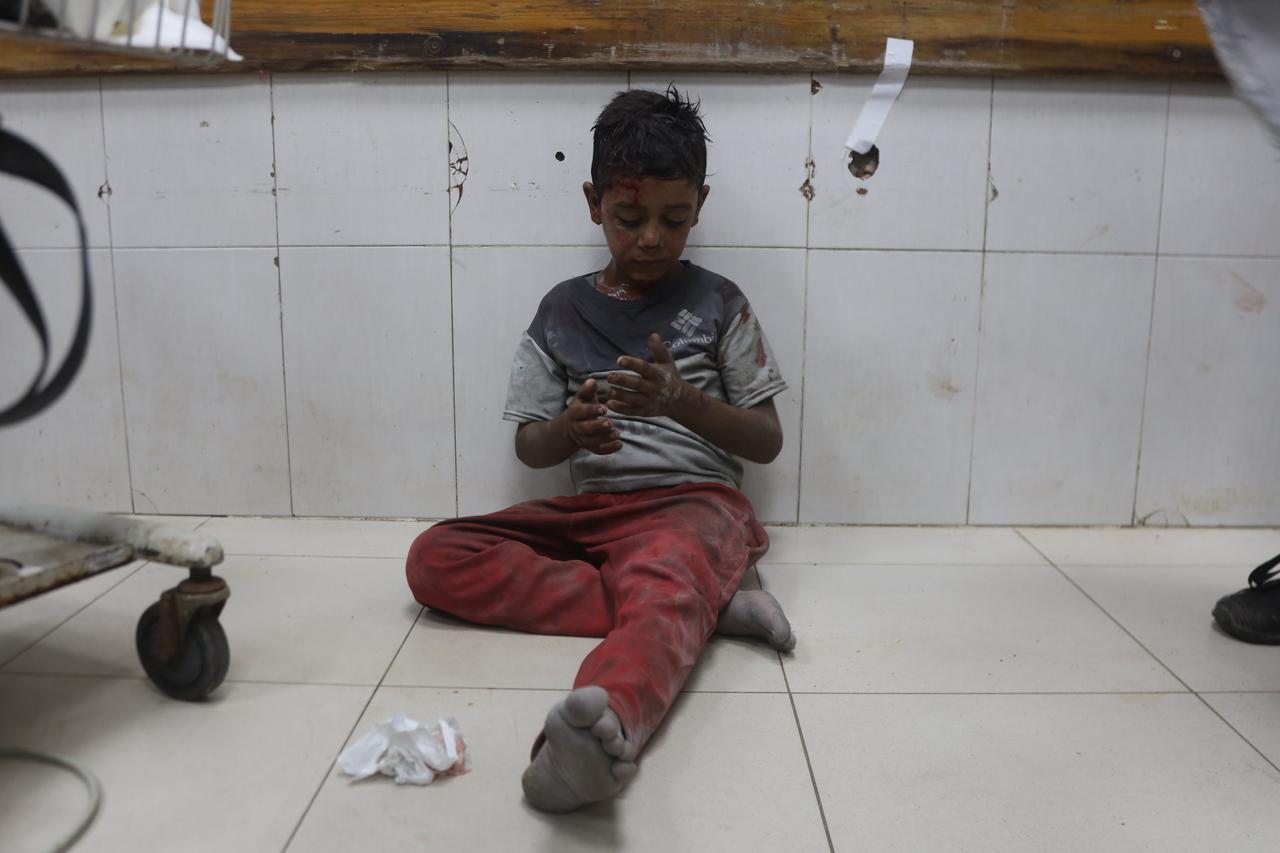
The Gaza Strip is witnessing mass killing, displacement, and famine, with violence escalating especially since October 2023.
Among the many atrocities unfolding, one of the most chilling patterns is the systematic shooting of Palestinian toddlers, infants, and teenagers by Israeli forces operating in densely populated civilian zones.
Dozens of documented cases suggest not incidental casualties in a chaotic battlefield, but a deliberate practice of targeting. In some cases, children were shot in the head, chest, or genitals while playing in tents, walking on declared “evacuation roads,” running to seek shelter, or standing in aid distribution queues.
There is significant evidence provided by medical professionals, human rights researchers, and eyewitnesses who have treated or documented children with gunshot wounds. Their testimonies and multiple international doctors, reveal a consistent and coordinated pattern of targeting children that amounts to war crimes under international humanitarian law.
In one of the most extensively documented investigations by the BBC World Service, reporters compiled 168 cases of children shot in Gaza between October 2023 and July 2025.
This is not the story of children accidentally harmed in war. It is the story of children targeted and a global political structure unwilling to stop it.
The body of a child, identified as Reyyan al-Fuqaha, who lost his life in an Israeli attack, is seen at Nasser Hospital in Khan Yunis, Gaza, August 01, 2025

Testimony from doctors, survivors, and aid workers paints a consistent picture of deliberate gunfire targeting children in Gaza.
Medical professionals across multiple hospitals reported treating children with single, high-precision gunshot wounds to the head, chest, neck, and genitals, injuries incompatible with the chaos of indiscriminate warfare.
Medical professionals suspect Israeli army has turned killing Gazan children to a game
British surgeon Prof. Nick Maynard, who worked at Nasser Hospital in Khan Younis, said on BBC Radio 4 that patterns of injury suggested conscious selection.
“On one day they’ll all be abdominal gunshot wounds, on another they’ll all be head gunshot wounds or neck gunshot wounds,” he said. “It’s almost as if a game is being played.”
Maynard described treating a twelve-year-old boy shot through the chest who died on the operating table. He said many victims were teenagers shot while seeking food at militarised distribution points, referring to the Gaza Humanitarian Foundation (GHF) aid centres as “death traps.”
American trauma surgeon Dr. Feroze Sidhwa documented 13 children with gunshot wounds to the head over a two-week period at Nasser Hospital. “Almost every day, I saw a kid shot in the head,” he said to Action on Armed Violence UK.
In total, 44 out of 53 American doctors surveyed by Sidhwa confirmed treating children with similar injuries. Hand surgeon Dr. Mark Perlmutter added that he saw two children who had each been shot twice. “No child gets shot twice by mistake,” he told France 24.
Does Israeli army really shoot children in Gaza?
The BBC investigation, which reviewed dozens of cases from October 2023 through July 2025, reported that in more than two-thirds of the 168 cases, the children were under 12 years old.
Among the 95 shot in the head or chest, 57 were reportedly shot by Israeli soldiers, while two were attributed to Palestinians, and the remaining had no confirmed eyewitness accounts. Many were hit while fleeing, others while playing in shelters or walking along declared evacuation routes.
Despite restrictions that block foreign media from entering Gaza independently, the consistency across testimony, scans, and survivor interviews offers strong evidence of a coordinated and ongoing practice. According to Matthew Morris of the Red Cross, the world “cannot accept this type of warfare” where children are routinely shot and killed in their homes, tents, or on the streets, because "whatever comes next will be even worse".
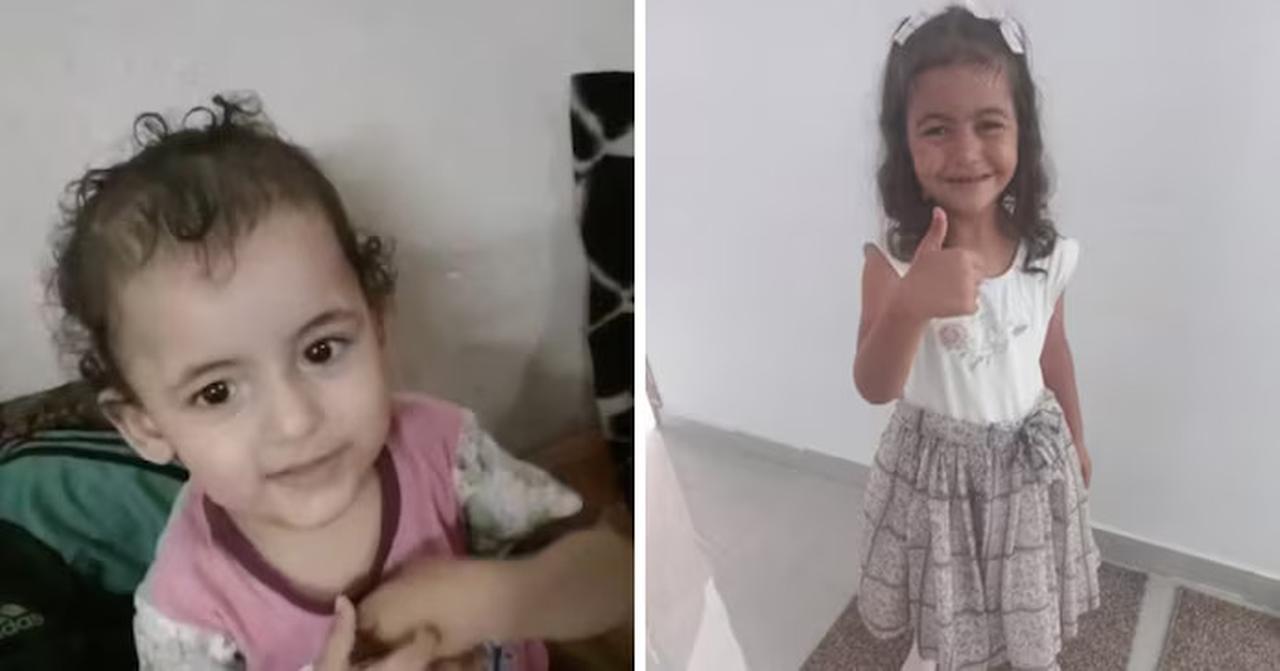
Behind the mounting statistics are children whose lives ended in silence and sudden trauma.
Eyewitness testimony and medical documentation reveal that these deaths were not tragic accidents in crowded war zones but occurred in moments of flight, stillness, or routine.
The following cases are among the most thoroughly verified by journalists, doctors, and family members.
The case of two-year-old Layan al-Majdalawi
Layan al-Majdalawi was two years old when she was shot dead on November 9, 2023, along with her father, Mohamed, as they attempted to evacuate from Gaza City.
Her 12-year-old sister Shahd recounted their final moments to the BBC. After sheltering for weeks at Al-Shati Primary School, the area was bombed by Israeli army and the family was ordered to leave. At midday, they walked toward Hamdi Street, which had no fighting at the time.
Mohamed was singing to Layan to keep her calm. Shahd saw an Israeli tank to their left, and the family began running. Mohamed was shot while carrying Layan. When Shahd and her teenage brother Aboud turned back, she was also shot in the arm while trying to retrieve the baby. Their father shouted at them to run. They never recovered the bodies.
The case of six-year-old Mira Tanboura
Nine days later, on November 18, 2023, six-year-old Mira Tanboura was shot in the back of the chest in front of her father.
She had just been screened at an Israeli checkpoint with her family and was walking along Salah al-Din road, which the Israeli army had designated as a humanitarian corridor.
According to her father, there were no clashes in the area at the time. “I am sure he was a sniper because it was only one shot that hit her in the heart,” he said. Mira was rushed to a hospital but pronounced dead.
The BBC confirmed there were no active firefights reported near the checkpoint. Her father said plainly, “The army told us they established a safe corridor. After [the Israeli army] made us head to the road, they killed an innocent child.”
The case of 18-month-old Liliana
In March 2024, 18-month-old Liliana was carried into a Gaza emergency room with a gunshot wound to her temple.
Dr. Ahlia Kattan, an American anaesthesiologist, held her during failed resuscitation efforts. “I knew she was dead, but her mum was screaming,” she said. “She had tried for nine years to have her.”
CT scans confirmed it was a direct gunshot, not shrapnel. Liliana had been shot with precision in the head. The child had been shot directly and precisely in the head.

Testimony from Israeli soldiers, leaked videos, and drone strike evidence suggest that the killing of children in Gaza is not the result of battlefield confusion but the product of official policy and tactical instruction. I
n interviews with journalists, former reservists described explicit orders to shoot anyone found outside designated corridors, while evidence of drone and sniper activity has exposed how clearly visible children were targeted in evacuation zones, schoolyards, and aid lines.
Confessions of an Israeli army reservist
A reservist identified only as “K,” who served in Gaza in early 2024, told the BBC he was not surprised to learn that children were being shot in the head. “I’m sure people who will do that exist,” he said.
He admitted that while he never personally witnessed the killing of children, his unit was initially ordered to open fire on anyone outside approved movement zones. “The general rule [at the beginning] was that this road was a safe zone and there should be no shooting. But anyone you see off the humanitarian road, shoot. Shoot to kill,” he explained.
Commanders initially clarified that if it was a woman or a child, soldiers were told to try to detain them instead, but this restraint deteriorated over time. “As time went on the stakes kept getting higher. It was just very much ‘nothing matters, that’s it.’ And then ultimately when we lost some people in a firefight it was just, ‘screw it, destroy everything, kill everyone you see.’”
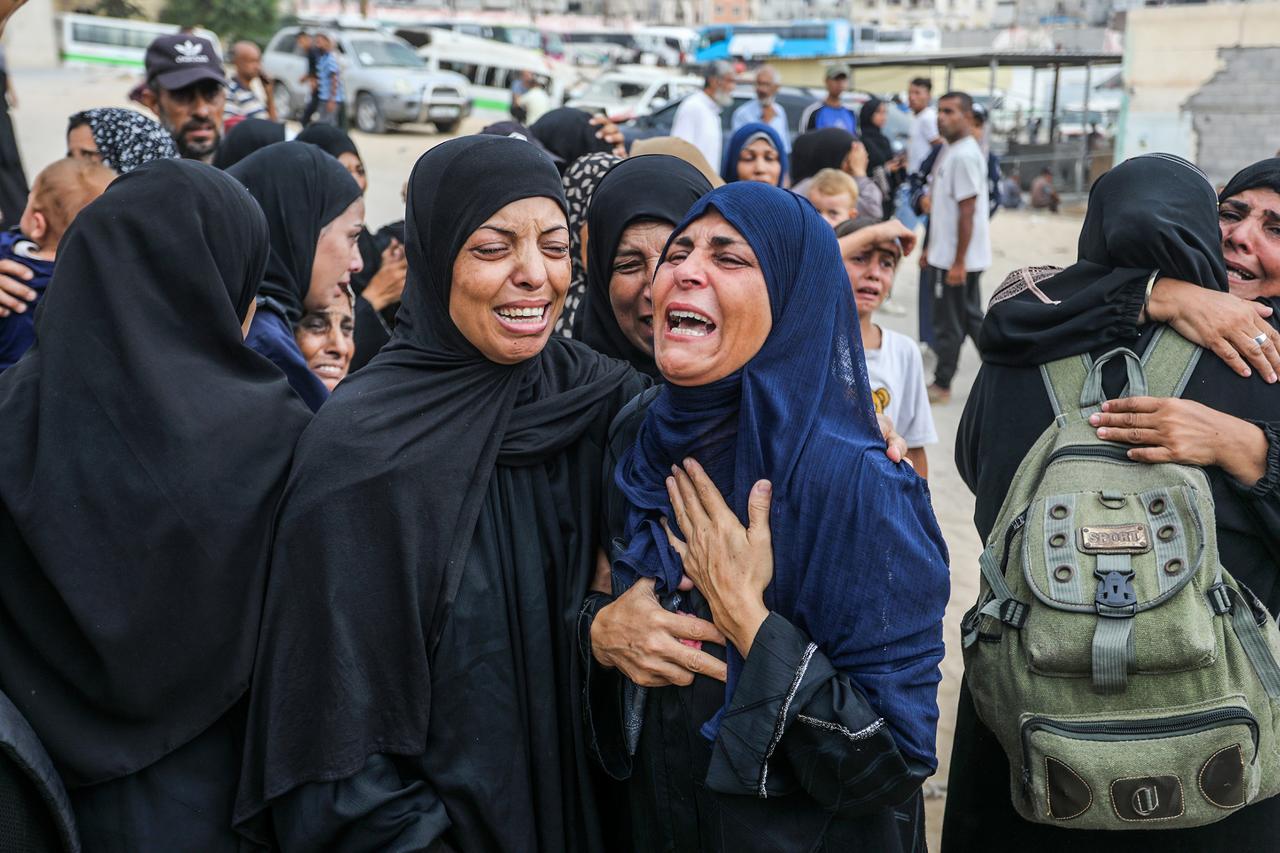
Leaked videos, reports of Israeli snipers shooting at civilians in Gaza
By 2025, leaked videos had begun circulating showing Israeli army commanders explicitly ordering soldiers to fire on civilians.
One such video, surfaced in April 2025, captured an officer instructing troops to shoot at anyone they come across, regardless of whether they were armed. The video aligned with what multiple international doctors had already concluded from field observations: that the targeting was not arbitrary.
In several cases, children were shot by quadcopter drones, which provide a high-resolution, close-range view of targets before opening fire.
Doctors and observers noted that such attacks made accidental targeting unlikely. As Dr. Mark Perlmutter told Al Jazeera, “The target at the end of a scope is unmistakable. They are a young human being. And when that trigger gets pulled on that target, it is not by accident. At all. Ever.”
According to Defense for Children International - Palestine, the use of quadcopters, sniper fire, and drones in civilian zones has become part of a broader campaign to neutralise entire population groups.
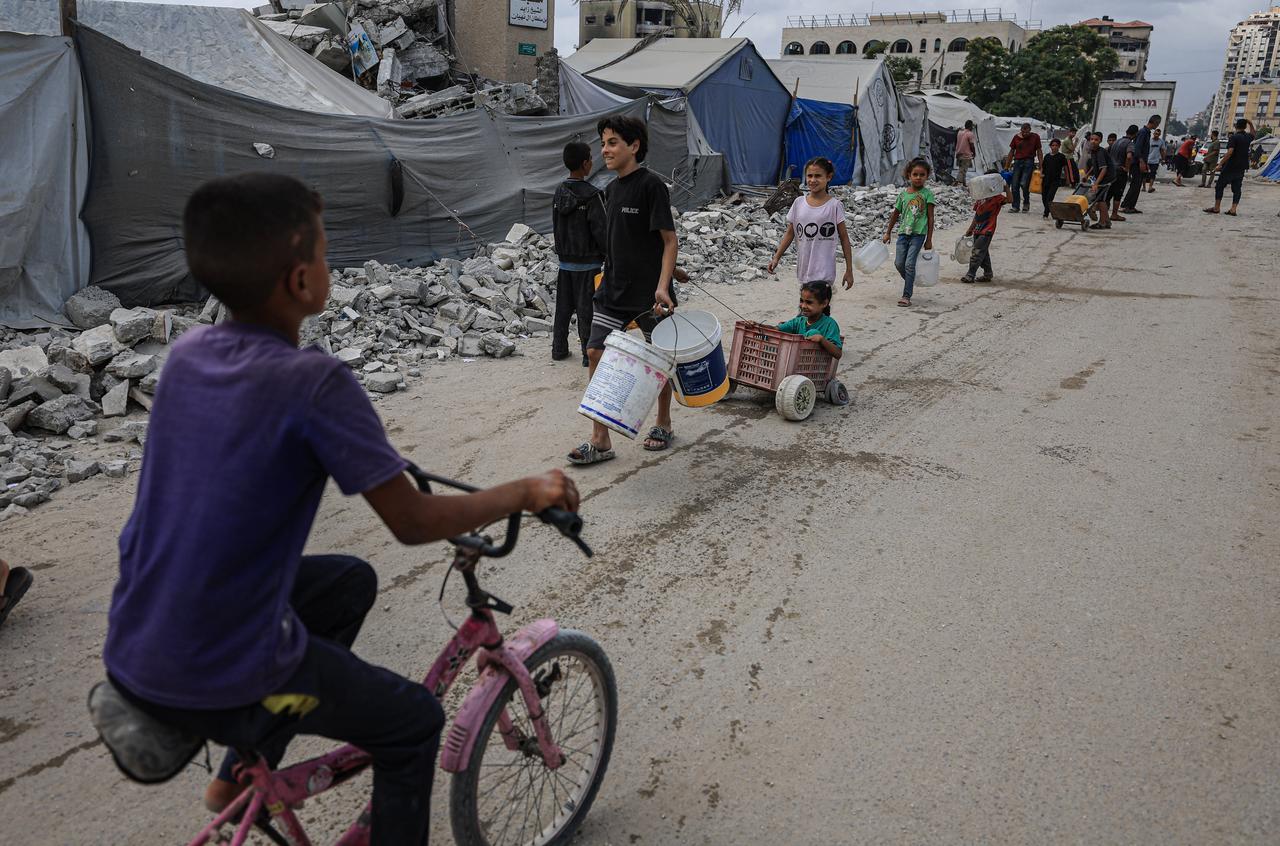
Despite mounting evidence that Israeli forces have deliberately shot Palestinian children, no meaningful international action has been taken to hold the perpetrators accountable.
The result is not just impunity but a breakdown of the legal and diplomatic systems meant to protect civilians in war.
American doctors returning from Gaza have described what they saw in terms of both scale and precision.
“It’s not just my finding,” said Dr. Mark Perlmutter. “I cried. Yeah, because it gave a number to the tragedy.”
Biden administration's response to Israel killing children
The findings regarding Israeli army targeting Gazan children were sent to the Biden administration, accompanied by public statements, op-eds in the New York Times, and direct appeals to investigate.
Under the Leahy Law, the United States is required to suspend aid to foreign military units credibly accused of gross human rights violations.
In comparable cases involving other countries, aid has been paused but in this case, nothing happened. Instead, the U.S. approved an additional $12 billion in military support to Israel, on top of the nearly $18 billion already disbursed.
Charles Blaha, a former State Department official who oversaw military vetting, later admitted that the review process, known as the Israel Leahy Vetting Forum, was designed to delay, obscure, and ultimately dismiss credible claims.
“It’s a very elaborate, complicated, delay-ridden, high-level process,” he said. “I believed, at the time, in the Israeli military justice system. That belief turned out to be incorrect.”
At the end of these pathways - of hospitals, laws, and letters - lie the bodies of children. As Chana Joffe-Walt, host of "This American Life", put it: “These deaths tell us it’s likely that an Israeli soldier can shoot a child in Gaza on purpose with no consequence. And the U.S. isn’t going to try to stop it.”
In Gaza, the message this sends is clear. No child is protected, and no system will act on their behalf. The failure is not just Israel’s. It belongs to every government that saw the evidence and kept supplying the rifles.
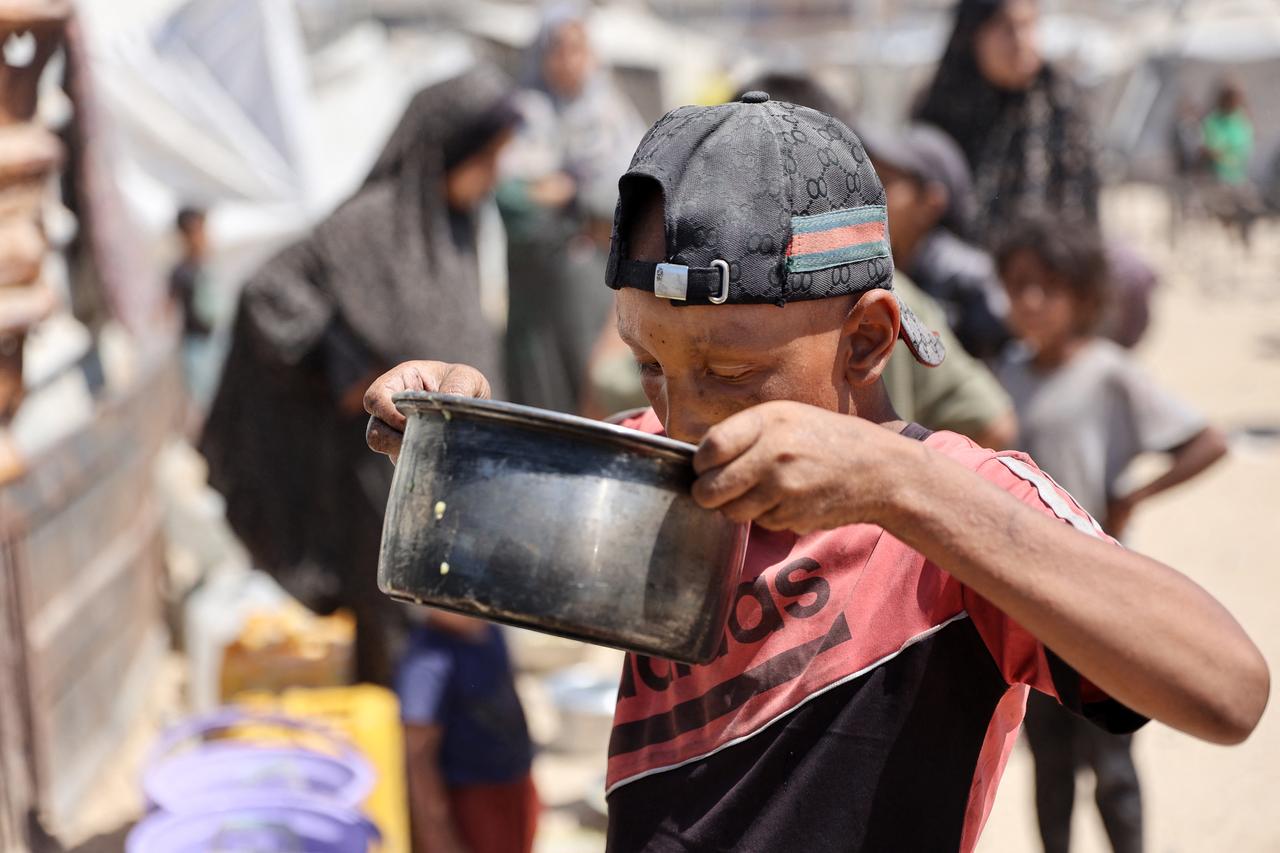
The starvation unfolding in Gaza is not a spontaneous humanitarian failure. It is the result of deliberate, long-standing state policy.
Since at least 2006, the Israeli government has treated the movement of food into Gaza as a tool of political control, openly calculating the minimum caloric intake required to keep Palestinians alive without allowing them to thrive, as reported by the Guardian. Today, as the territory descends into full-scale famine, the roots of that policy have become impossible to ignore.
In a 2006 statement, a senior adviser to then-Prime Minister Ehud Olmert described the approach clearly: “The idea is to put the Palestinians on a diet, but not to make them die of hunger.”
Two years later, an Israeli court ordered the release of official documents revealing the precise calorie calculations made by the Coordination of Government Activities in the Territories (Cogat), the military body that regulates Gaza’s border.
According to those documents, Israeli officials determined that Palestinians required 2,279 calories per person per day, which could be supplied by 1.836 kilograms of food. The state used this data to control and limit the amount of food allowed through crossings, openly engineering subsistence without collapse.
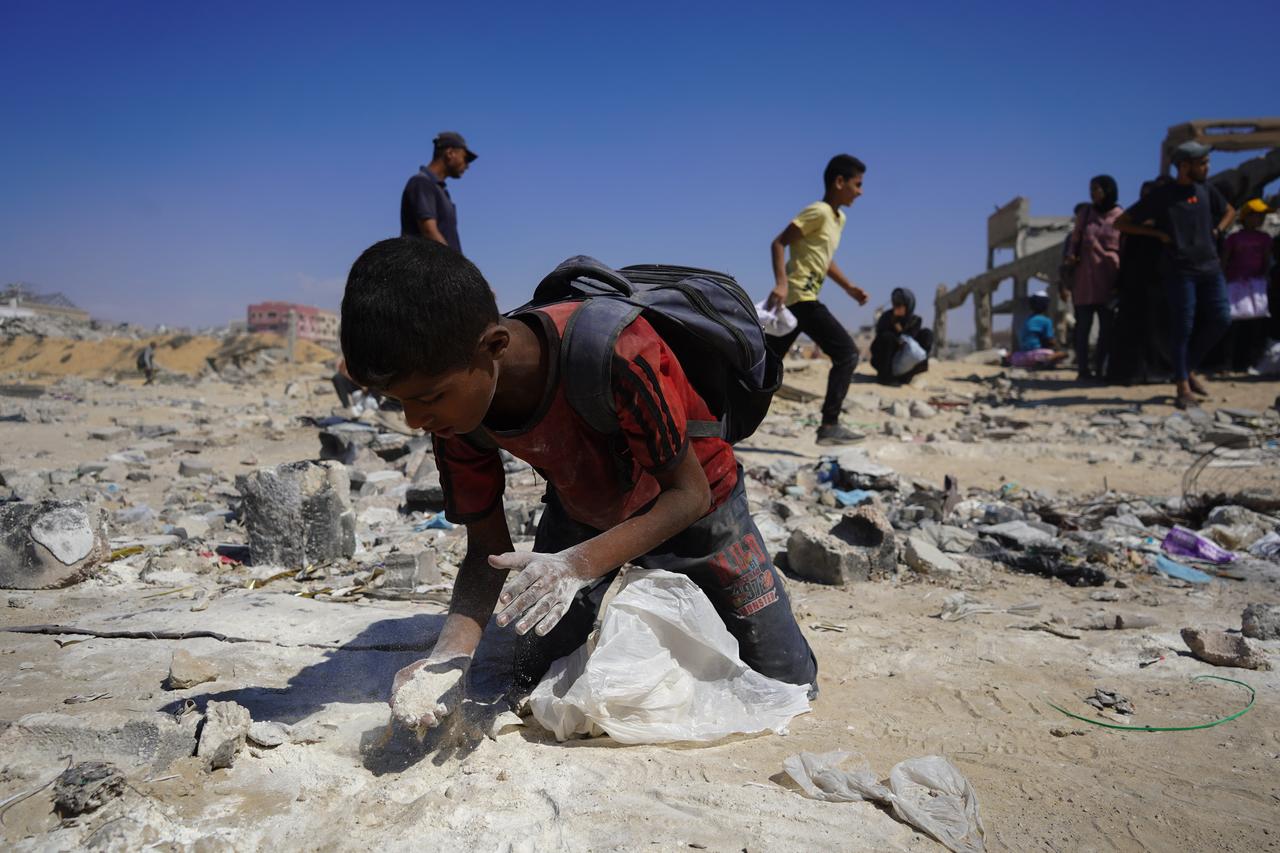
Connection between Israel interest in Gazans' calorie need and amount of aid allowed
Israel's level of precision has never been applied to guarantee food security. Instead, it has served to manage the optics of starvation.
When mass hunger broke out in Gaza in early 2024, Israel initially denied it. Later, it shifted blame to Hamas and UN aid agencies. Officials shared images of stacked pallets at the border to suggest that aid was available but not being distributed.
Still, data compiled by Cogat itself, and later cited by UN experts, showed the truth. Between March and June 2025, Israel allowed just 56,000 metric tonnes of food to enter Gaza, less than one-quarter of what was needed during that period.
As The Guardian reported in July 2025, humanitarian groups had requested just 1 kilogram of food per person per day, an emergency-level minimum. Even that request was not met. Hence, starvation became inevitable as even if every aid package had been distributed perfectly, the calories not enough.
The Israeli Information Center for Human Rights in the Occupied Territories, B’Tselem, described this as an “official and openly declared policy” of mass starvation, and cited it as evidence that Israel was committing genocide in Gaza.
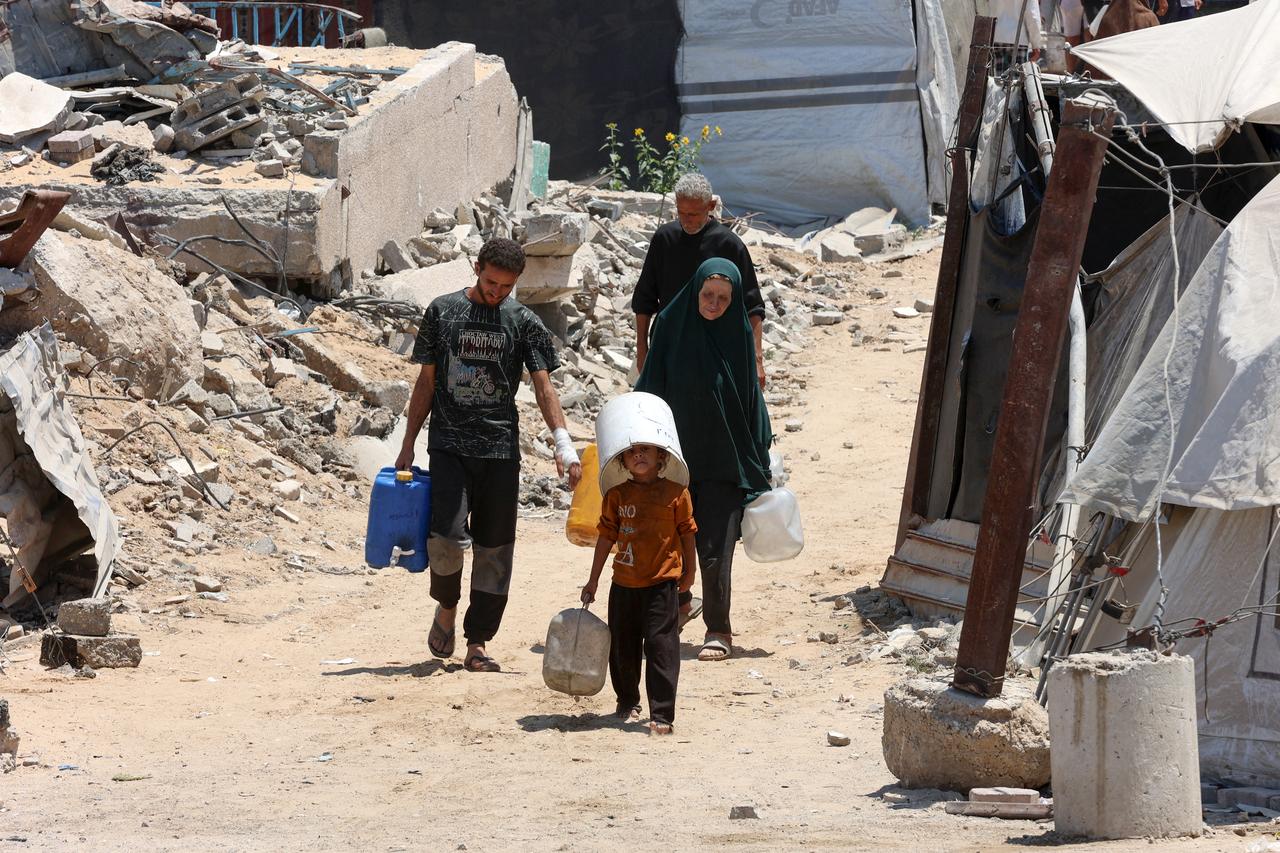
As of August 1, 2025, the World Health Organization (WHO) and UN-backed food security monitors have confirmed what Palestinian doctors, aid workers, and families have been reporting for months: famine is no longer a risk in Gaza. It is underway.
The World Food Programme’s director, Cindy McCain, warned that “the longer we wait to act, the higher the death toll will rise,” as reported by BBC.
How many people have died of starvation in Gaza?
In a July statement, the WHO confirmed that 63 out of 74 famine-related deaths in 2025 had occurred in July alone, and that most victims were either dead on arrival at hospitals or died shortly after.
Their bodies showed signs of severe wasting, a condition that occurs when the body begins consuming its own tissue in the absence of food.
These figures are likely undercounts. As international observers and health officials pointed out, Israeli restrictions on movement, fuel, and communications have destroyed the healthcare system’s ability to record deaths accurately.
Many children and elderly people are buried immediately without formal autopsies, and entire households remain unreachable under rubble or in isolated camps. The WHO warned that “deliberate blocking and delay of large-scale food, health, and humanitarian aid has cost many lives.”
The UN’s Famine Review Committee singled out the Gaza Humanitarian Foundation (GHF), a U.S. and Israeli-backed logistics group operating since May, as part of the problem. “Even if it functioned without the appalling levels of violence reported at distribution sites, the GHF’s aid plan would still lead to mass starvation,” it said, as reported by the Guardian.
These deaths are not abstract but the result of quantifiable shortages that Israel’s own records acknowledge. Between March and June, Gaza received less than 25 percent of the food needed to meet basic survival requirements.
At no point since the start of the war has Israel met the minimum threshold. The result is mass death by design, acknowledged too late by the international institutions meant to prevent it.
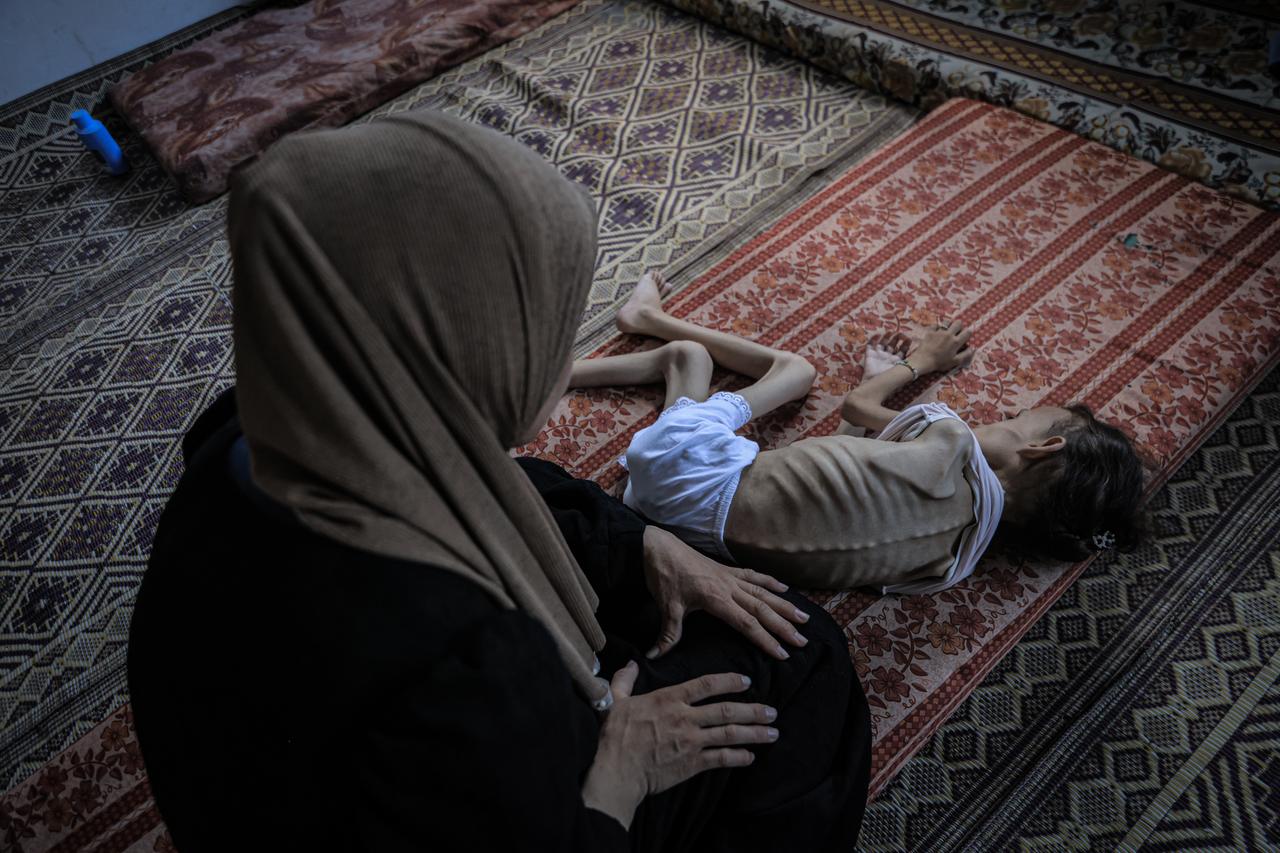
Gaza’s children are not just dying from starvation, they are surviving it in bodies that may never fully recover.
According to the World Health Organization (WHO), more than 5,000 children under 5 were admitted for outpatient treatment of malnutrition in the first two weeks of July 2025 alone, and 18 percent of those were diagnosed with Severe Acute Malnutrition (SAM), the most life-threatening stage.
This continues a steeply rising trend since May. In June, 6,500 children were admitted for treatment, marking the highest number recorded since October 2023.
Doctors warn that even those who survive now face permanent damage. In a joint statement reported by NBC, experts from Johns Hopkins University, the International Rescue Committee (IRC), and WHO said that many children will suffer stunting, wasting, and irreversible trauma.
Can Gaza's malnutrition crisis be resolved?
Gaza’s food crisis is now fully entangled with the collapse of its health system. Clinics treating child malnutrition report critical shortages of fuel, supplies, and therapeutic food.
The WHO confirmed that nearly 1 in 5 children under five in Gaza City are acutely malnourished, and that over 40 percent of pregnant and breastfeeding women are now severely malnourished, a figure that signals a generational threat to survival and development.
Medical workers report children arriving unresponsive or dying minutes after admission, their bodies showing signs of advanced starvation: wasting limbs, swollen bellies, and complete dehydration. Many are too weak to cry. Most are buried without autopsies, their deaths unrecorded in any official system.
These outcomes are not unforeseen. As the Guardian reported, Israel’s blockade policy has long been informed by caloric calculations and strategic restrictions.
Between March and June, only 25 percent of the minimum required food supply was allowed into Gaza. Even after international outcry, including demands from ally Donald Trump to get "every ounce of food” to starving children, Israel's Prime Minister has promised only “minimal” increases.
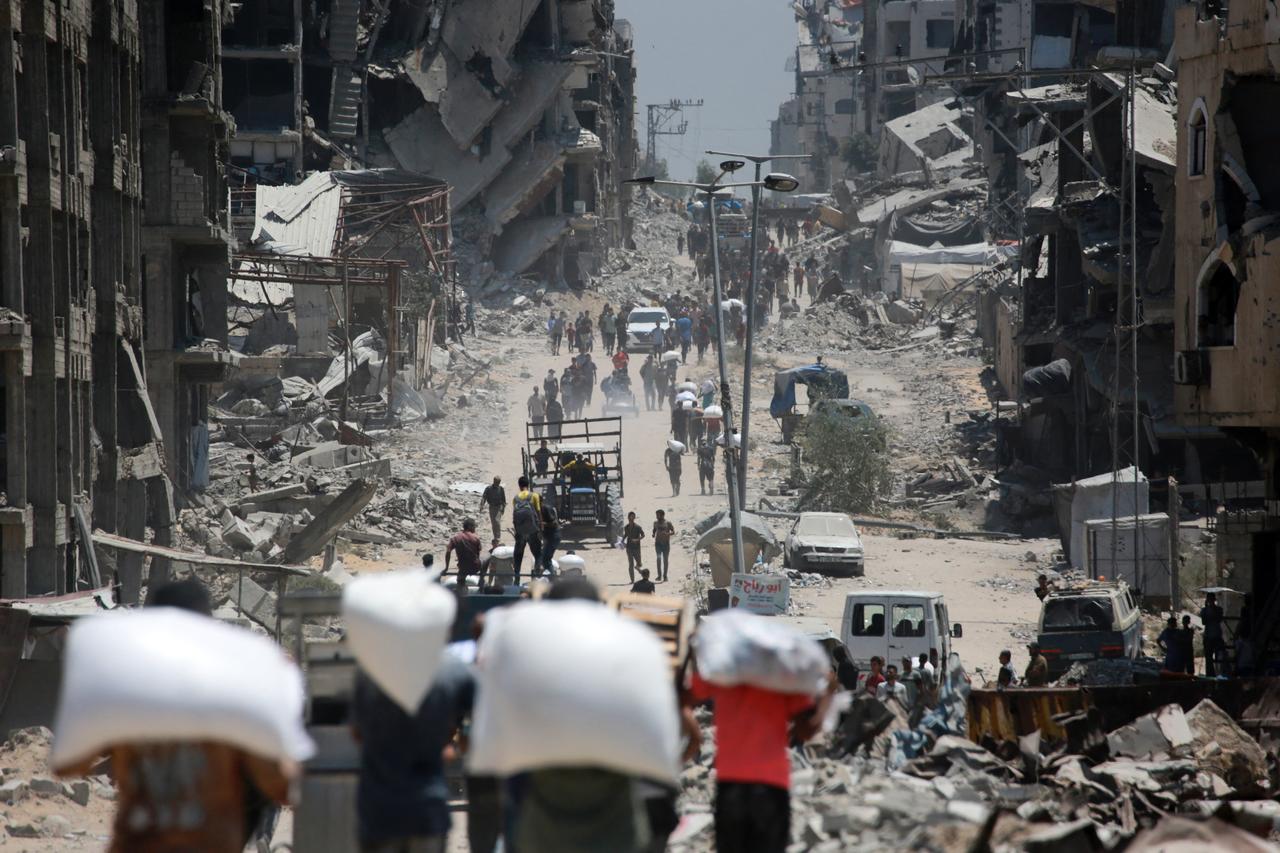
As Gaza’s famine deepens, even the search for food has become life-threatening.
According to Al Jazeera, at least 1,000 Palestinians have been killed by Israeli forces near aid distribution sites since May 2025, many of them run by the Gaza Humanitarian Foundation (GHF), a logistics network backed by Israel and the United States.
How Gazans get ambushed at aid distribution sites
On Wednesday, July 30, 71 people were killed in just one day at two aid distribution locations. Fifty-one died and over 648 others were wounded near the Zikim crossing, as they approached trucks entering northern Gaza, according to the Gaza Government Media Office. An additional 20 people seeking aid were killed near the Morag Corridor in Khan Younis, reported the Nasser Medical Complex.
These deaths are not isolated. The UN and multiple humanitarian groups have condemned GHF for failing to provide both adequate aid and protection. The lack of security has turned food distribution into a deadly gamble, with civilians facing sniper fire, drone surveillance, and chaotic looting driven by extreme hunger.
Hunger, looting, mass deaths among most vulnerable in Gaza
On the ground, UNRWA spokesman Adnan Abu Hasna told Al Jazeera Arabic that the current aid levels “do not reach the majority of the population.”
Only 269 trucks entered Gaza over four days, far short of the 500 to 600 per day required to meet basic needs. As desperation rises, looting has surged.
“Now, looting aid is not very shocking,” said Al Jazeera’s Tareq Abu Azzoum, who reported that people have gone days without food and are being denied access to water, medicine, and basic supplies.
Among the civilians struggling to survive is Jihan al-Quraan, a mother who held her young daughter as she spoke to Al Jazeera.
“Look at her stomach! There is no flesh, just bones from the lack of food – an entire month without bread,” she said. After returning empty-handed from a soup kitchen, she added, “I only found some dry pasta shells on the floor.”
The Euro-Med Human Rights Monitor confirmed that dozens of elderly people have died in displacement camps due to starvation, malnutrition, or lack of treatment. Many were buried without autopsy or proper documentation. Hospitals, it said, have reported an “unprecedented surge” in deaths in recent weeks, with hundreds arriving in states of extreme exhaustion.
As the crisis worsens, Israeli bombardments continue. Al Jazeera documented at least 15 additional deaths from airstrikes on the same day, including journalist Ibrahim Mahmoud Hajjaj, killed in Gaza City. Since the start of the war, 60,138 Palestinians have been killed, and more than 146,000 wounded.
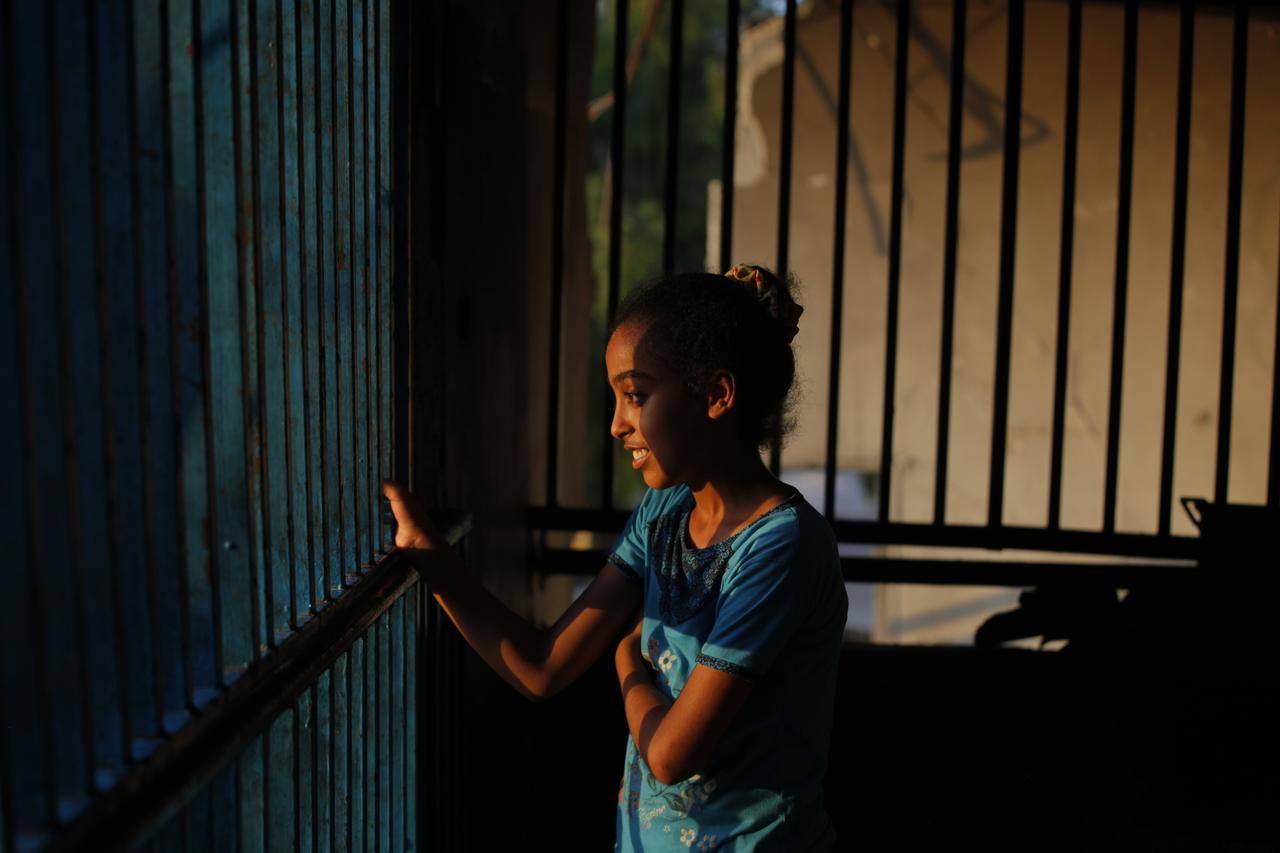
The killing of Palestinian children in Gaza has taken two parallel forms: direct targeting by Israeli forces and the systematic use of starvation as a weapon.
Medical reports, satellite images, witness testimonies, and statements from Israeli soldiers document sniper attacks, drone strikes, and aid blockades that disproportionately harm minors.
These deaths are not the byproduct of chaotic warfare but of deliberate attempt. Children have been shot while playing, while seeking food, or while walking along corridors declared safe.
At the same time, hunger has become lethal, with Gaza’s Health Ministry confirming 154 deaths from malnutrition, including 89 children, most of them in the past month.
UN agencies and the World Health Organization have declared that famine is now underway, while aid deliveries remain far below minimum requirements.
The current evidence and historical archive shows that these outcomes were not accidental. From the Israeli army’s caloric calculations to the shoot-to-kill orders for anyone outside evacuation zones, a clear pattern of intent emerges.
Despite this, no international body has initiated a formal investigation, and no arms-supplying state has suspended support. The United States, legally bound by the Leahy Law to withhold aid from units implicated in gross human rights violations, has instead increased military assistance.
This sustained inaction raises fundamental questions about the purpose of international law if it cannot protect children from sniper fire or death by starvation. In Gaza, children have become the frontline of a deliberate strategy, executed with precision, justified by state doctrine, and enabled by global silence.